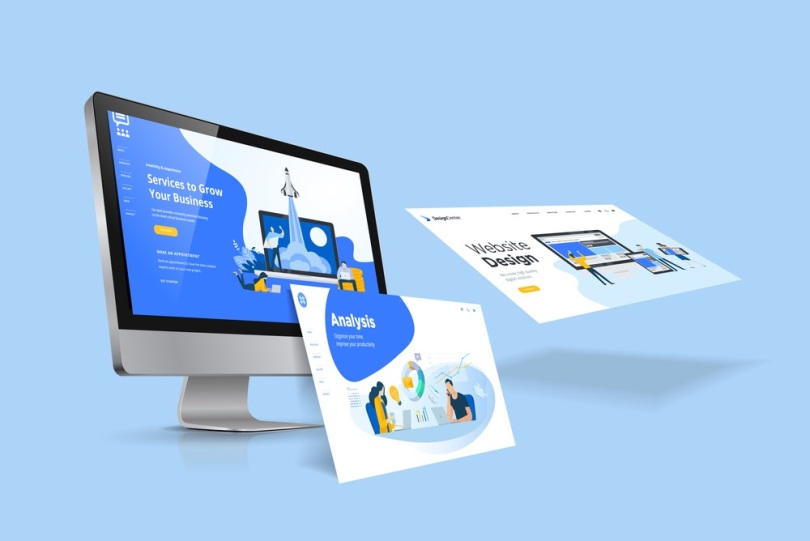Web design refers to the visual aesthetics and layout of websites and web pages, focusing on optimizing the user experience and interface. In the second sentence, “what is web design” is the creative and technical process of designing websites and web applications.
Overview of Web Design
Web design determines the overall appearance of websites through careful manipulation of elements like colors, fonts, graphics, animations, and layouts. The goal is to create visually appealing and easy-to-use digital interfaces for both desktop and mobile platforms.
As more businesses move online, having a well-designed website is crucial for engaging users and customers. Websites are often the first touchpoint between brands and audiences. An intuitive, aesthetically pleasing website design can capture attention, communicate credibility, and encourage interactions.
“Web design refers to the design of websites that appear regardless of the device’s resolution. It’s typically accomplished through responsive techniques,” explains an industry expert.
Responsive web design allows web content to adapt seamlessly to varying screen sizes. As people browse on both desktop and mobile, responsive capabilities help websites shrink or expand flexibly.
Key Elements of Web Design
Exceptional web design blends creative visual expression with functional digital performance. Several key elements come together to shape user experience:
Visual Design
Visual design sets the aesthetic style and branding of websites through elements like:
- Colors
- Fonts
- Layout formats
- Icons
- Logos
- Imagery
- Animations
Harmonious visual design makes sites more usable and appealing. It establishes a unique style and brand identity that users can recognize.
User Experience
The user experience (UX) of a website encompasses how easy and satisfying it is to navigate and interact with. Strong UX design empowers users by creating intuitive flows.
Principles of UX design include ensuring websites are:
- Useful
- Usable
- Findable
- Credible
- Engaging
Optimization for mobile usage and accessibility for diverse users also fall under the realm of UX design.
Functionality
Function relates to the technical performance and capabilities of websites. Optimizing functionality aims to help users efficiently find information and complete tasks.
Key aspects of website functionality include:
- Navigation
- Speed
- Mobile responsiveness
- Cross-device compatibility
- Structured layouts
- Search engine visibility
Functionality works hand-in-hand with visuals and UX to facilitate positive user experiences.
Web Design Tools and Processes
Creating a website design involves strategizing, prototyping ideas, and employing specialized tools. Common programs used by web designers include:
- Figma
- Sketch
- Photoshop
- Adobe XD
Many also utilize website builders like WordPress and Wix for efficient design capabilities.
Typical web design processes encompass:
- Wireframing and prototyping layout ideas
- Testing designs on key devices
- Selecting aesthetics like color schemes
- Writing website content
- Building out custom functionality
The right tools and systematic approach guides impactful website designs.
Web Design Trends
Like all digital spaces, website design trends come and go to keep things fresh. Some current trends include:
- Flat design for minimalist styles
- Parallax scrolling for visual interest
- Mobile-first platforms
- Responsive capabilities
- Bright, vibrant color schemes
- Subtle animations and transitions
- Personalized user experiences
Staying abreast of the latest web trends allows designers to create up-to-date digital experiences.
Career Prospects in Web Design
As digital presences become more imperative across industries, talented web designers are in high demand. Individuals skilled in areas like:
- UX design
- Graphic design
- Coding languages
…are coveted in this competitive field.
Both freelance and full-time job opportunities exist, as more businesses rely on well-designed websites to aid their branding and conversions.
Conclusion on What Web Design Entails
Web design blends creative aesthetics with digital functionality to craft impactful user experiences. Designers carefully determine visual themes and interactive flows to engage audiences. With technology advancing faster than ever, web design as a career promises exciting prospects for both established professionals and new talent. Well-designed online presences are imperative for modern personal and business goals alike.

